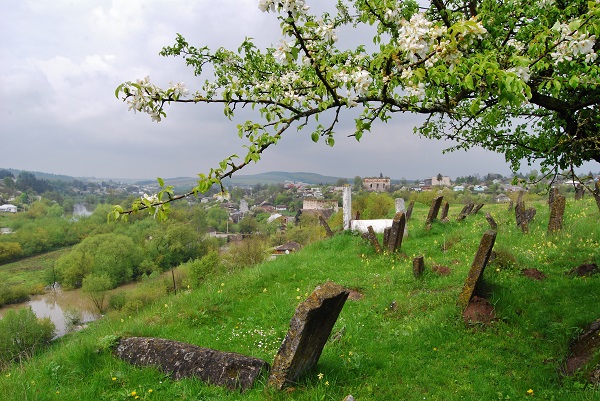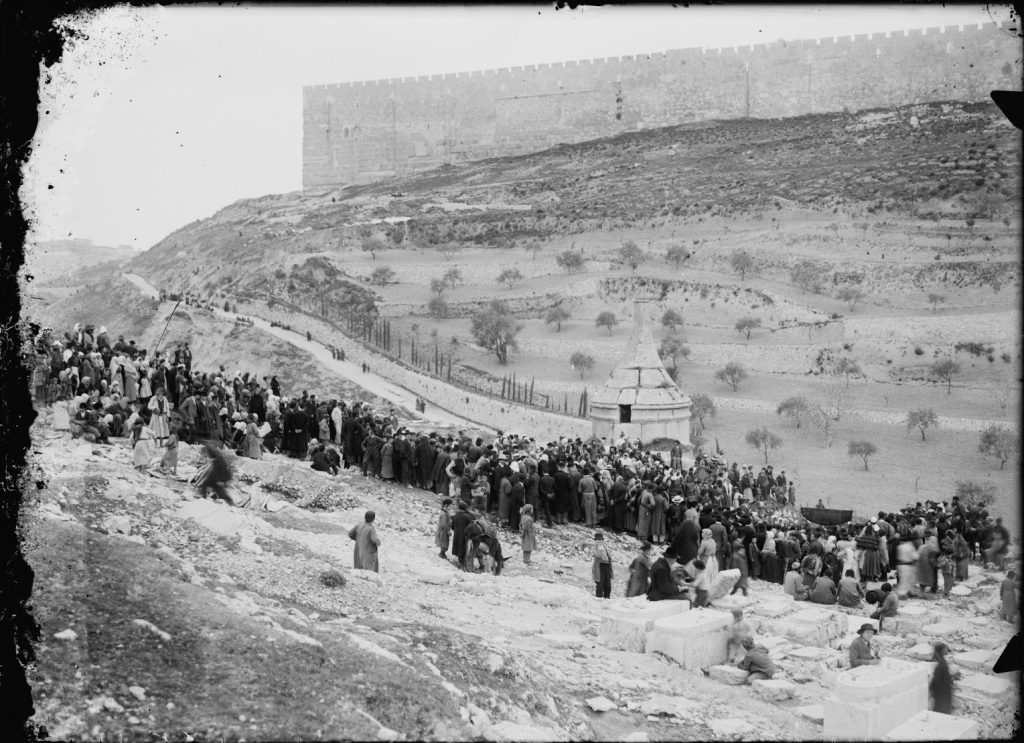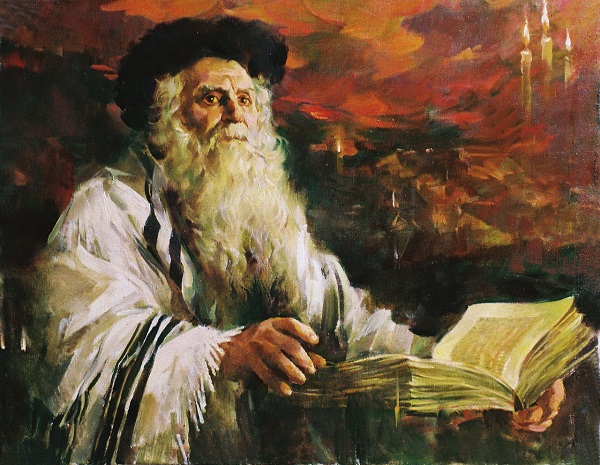A ducat, a broken tooth, and a black ḥupah: How Jews battled epidemics

In the mid-twentieth century, the causes of epidemics were not understood even by scientists, let alone ordinary people, who saw in this misfortune only Divine punishment and/or witchcraft, together with the machinations of evil forces. All this was generously jumbled up in the wildest superstitions. Superstitions were in full bloom in small towns, where the population did not have a strong grasp of the natural sciences but, on the contrary, of the supernatural. Epidemics were accordingly combatted not so much by sanitary methods (washing hands, boiling water, etc.) as by various rituals.
The most widespread ritual was plowing. It was carried out as soon as an illness arrived in a city, town, or village. It was believed that the furrow encircling a settlement served as a protective feature that prevented a plague (cholera, smallpox, etc.) sorcery from reaching people. Incidentally, we see the same thing in Gogol's Vii, only in this novella the line was drawn with chalk. The single furrow also had a practical significance: It warned travelers that it was best not to enter the plowed locality.
Since this was a magic ritual, horses and oxen were not suitable for it. The plow was traditionally pulled by women, more often than not by widows or, on the contrary, virgins. Sometimes they were naked because it was believed that sorcery could hide inside clothing. In small towns with an international population, female representatives of all communities were harnessed to the plow in turn.

Jews had purely national anti-epidemic rituals. Moreover, all the ones known to the author are linked to cemeteries. One mention appears in a historical anecdote that is popular in Sataniv to this day (the author heard various interpretations from five people).
A gatekeeper and a ducat
This story refers most likely to an epidemic of cholera that swept through Podilia in 1830–1831. At the peak of the plague, the heads of Sataniv's Jewish community decided to conduct a protective ritual. They hired as a cemetery watchman a Muscovite drifter who had settled down with a local widow. This foreigner, a Gentile and an outsider, took on the role of ceremonial gatekeeper—Charon of the world of the dead.
According to a predetermined scenario, the Muscovite had to bar the way to the next funeral procession and not let it enter the cemetery, saying: "How much can you die? Enough, already! There's no room left for graves!"
During the "argument" with the gravediggers, the ritual watchman was required to repeat the following keywords as often as possible: "Enough of dying!", "Enough deaths," "There's no more room for cholera," and the like—a classic example of word magic.
After a lengthy dispute, the gatekeeper was supposed to "take pity" and, in exchange for a silver ruble, allow the procession through to the cemetery, pronouncing the final word: "You are burying the last one. That's it! There will be no more deaths from cholera in Sataniv because there are no more places left in the cemetery!"

The Muscovite-Charon did everything according to the agreement—and even better! The organizers of the rite, therefore, gave him a gold ducat instead of the promised ruble. People say that as a result of this unprecedented generosity, the "watchman" initially lost the power of speech and then exclaimed: "Hurrah! For that kind of money, I will lay down all of Sataniv!"
In a word, he spoiled everything, after which all the magic went down the drain.
Of course, this anecdote was invented after the epidemic. Humor is often a defensive reaction to experienced horror. But there is a grain of truth in this: The above-mentioned rite is absolutely real. This is evidenced by the fact that this story is known in different versions in other former small towns.
In fact, the watchman in question would never have said anything like that. Anti-cholera magic was taken very seriously in those days, as the disease mowed down everyone indiscriminately.
"Black wedding"
This ritual is typical of Hasidic communities in Eastern Europe (above all, in the territories of the former Rzeczpospolita—the Polish-Lithuanian Commonwealth from the sixteenth to the eighteenth century—Ed.).
It was believed that in order to halt an epidemic in a cemetery, you required a wedding. Clearly, none of the wealthy members of the community wanted to marry amidst tombstones. So they selected the most socially vulnerable individuals: orphans, disabled people, beggars, and so on. For their agreement to stand under the ḥupah [wedding canopy] in such an unusual place, the kahal [Jewish community council] was obliged to buy the newlyweds a house and provide a dowry.
According to Jewish tradition, the dead are sad that they cannot keep the commandments, including participating in a wedding celebration and delighting the bride and groom on this special day. Only at a "black wedding" can the inhabitants of the necropolis feel welcome and perform the great mitzvah. Accordingly, after the ceremony that binds the living and the dead, the deceased joyfully testify in the Heavenly Court in favor of the community that invited them to the wedding. Yes, and the Lord himself looks favorably upon the organizers. It is believed that at a "black wedding," He acts as a matchmaker.

In addition, in the eyes of the Almighty and the deceased "lawyers," the community acted as a benefactor. After all, they literally showered material benefits on the poorest and most destitute representatives of the kahal, who could now embark on a decent life.
The rite got its name from the color of the ḥupah; mainly black cloth was used. There is evidence that in the towns of Ukraine, the "black ḥupah" was raised in the 1920s during epidemics of the notorious "Spanish flu" and typhus.
The Righteous Besht and a broken tooth
A Hasidic tale recorded in Sataniv recounts the intercession of the dead. This happened in the eighteenth century when the city was struck by the plague. In despair, people turned to the righteous Baal Shem Tov (Besht) so that he would ward off the pestilence from the town with his prayers.
The tsadik rushed to Sataniv and ordered the most respected men to walk around the homes of all the Jews and check to see if anyone had sinned and whether this sin had been corrected. However, everything was fine in the houses, and no significant misdeeds were recorded among their inhabitants.
The Besht then sent someone to check the cemetery; perhaps something was wrong there. The inspection found that there was one abandoned tombstone, very old, with inscriptions that were almost erased by time. In addition, it had collapsed and cracked in two.
Upon hearing this, the Besht hurried to the cemetery. He stood at the grave, said a prayer, and then ordered it to be dug up. The Jews were very surprised. Even though the grave was practically the oldest one in the entire cemetery, the deceased was lying there as though he had been buried the day before, and his clothes were like new.
That dead man rises from the grave, bows to the Besht, and says:
— Greetings, my lord and teacher!
— And greetings to you, but I do not know who is teaching whom. Maybe you are teaching me?— the Besht replies humbly.
— No, no, — I know for sure that you are my master and teacher; you are a step above me, — says the dead man.
— If that is so — the Besht replies — then I ask you to put in a good word with God for the residents of Sataniv. Let Him take the pestilence away from them.
To which the dead man replies:
— No, teacher, I will not ask because I am terribly angry with them!
— For what? the Besht said in surprise. — What did they do to you?
— Teacher, the local gravediggers offended me. When they come to the cemetery to dig a grave, they get drunk and create all sorts of mischief. Recently, they were digging a grave nearby, and they were so drunk that they did not notice me. They hit my bones with a shovel and knocked out a tooth. That is why I am terribly angry with them.

The Besht replies:
— Show this tooth, please. I promise to return it to you.
After getting what he wanted, the Besht says:
— As I promised, I will give it back to you but not right now; at the next meeting in the Better World. In the meantime, I ask you to intercede before the Almighty for this small town. May the plague leave here, and may there nevermore be two deaths here in one day and two sick people in one home. But in the meantime, lie down in the grave and wait for me; then I'll give you back this tooth.
As soon as they covered the grave and fixed the tombstone, the epidemic stopped at that very moment. The Besht kept his word, and when he was dying, he commanded that the tooth that he had in his safekeeping be placed in his grave in order to return it to its owner in the Better World.
It is clear that this is only a legend from the category of instructive Hasidic tales. The moral is respect for the dead and condemnation of those who do obscene things in cemeteries.
From a contemporary standpoint, this tale offers an opportunity to learn about how the causes of the pestilence were presented in the past. Starting in the nineteenth century, a special prayer for deliverance from pestilence written by Rabbi Eliezer bar Itzhak Papo (1785–1828), author of the book Pele Yoetz ("Wonderful Counselor"), a short encyclopedia of Jewish ethics, became popular in synagogues.
In keeping with tradition, it was revealed to Rabbi Eliezer in a spiritual epiphany that the city of Silistra, where he was a rabbi, was threatened by a deadly epidemic. The Heavenly Court offered him a choice: either an epidemic will break out, but he will survive, or he will accept a premature death and save the entire community. Rabbi Eliezer took the opportunity to save the city. This was probably the cholera pandemic that raged from 1826 to 1851. Incidentally, here we also see a form of "intercession of the dead." Rabbi Eliezer bar Itzhak Papo dies in order to intercede for his community.
Dmitry Polyukhovich, Special to Hadashot
Originally appeared in Russian @Hadashot.
Translated from the Russian by Marta D. Olynyk.
Edited by Peter Bejger.













